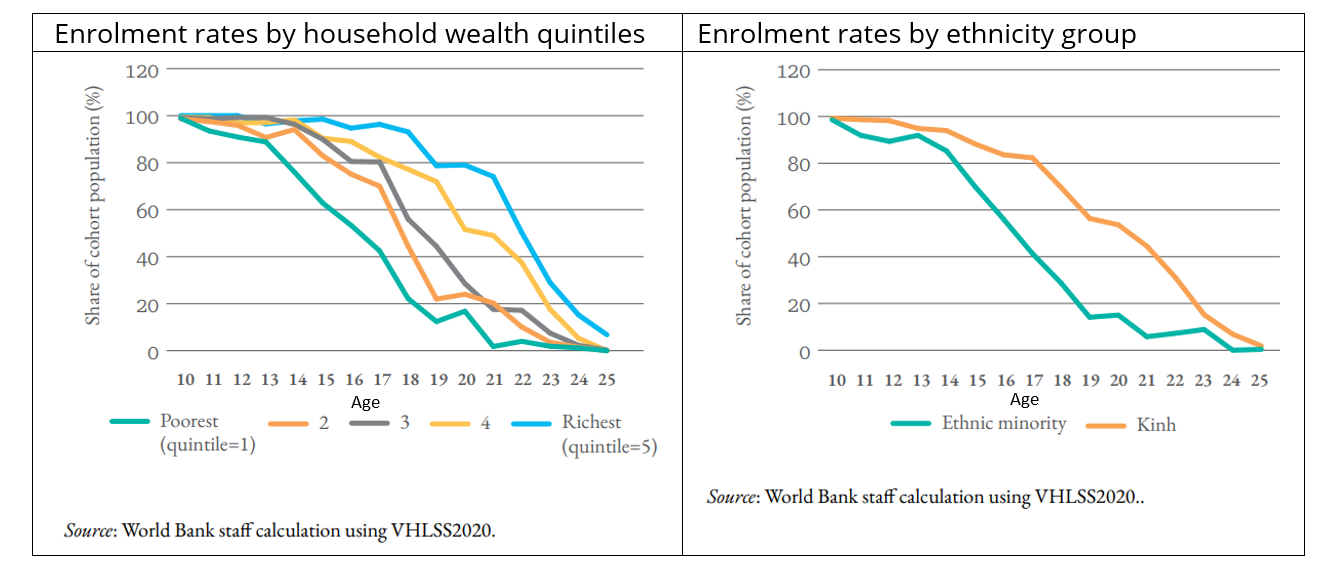 This week, more than 23 million students across Vietnam tuned in to the reverberating sound of beating drums to mark the start of a new school year.
This week, more than 23 million students across Vietnam tuned in to the reverberating sound of beating drums to mark the start of a new school year.
This week, more than 23 million students across Vietnam tuned in to the reverberating sound of beating drums to mark the start of a new school year. By tradition, the thunderous drumming evokes the excitement of children as they embark on a journey of learning and development. Education levels today far exceeds those of previous generations, with nearly universal enrollment in primary and lower secondary levels.
This fall, following a period of disrupted learning, it is hoped that the upcoming school year will provide an opportunity for students to catch up, continuing to build on their foundation of skills and knowledge that will equip them for success. More than ever, it is vital to ensure that all children have equal access to opportunities for education by narrowing remaining educational gaps. Learning during COVID-19 varied substantially among different parts of the population, with poorer households having less access to online learning than wealthier ones. Even among those that were digitally connected, studying at home faced challenges and distractions.
Education is key to creating greater human capital that will drive economic growth and development in the Next Mile of Vietnam’s development. Yet despite major strides in improving education, inequalities persist, and there are wide differences among socioeconomic groups with regards to education completion, the quality of the schooling children receive, and how much households spend on education.
Educational completion is much lower for children in the poorest households than the richest ones. By age 19, only a fifth of students from the poorest 20 percent remain in school, compared with 80 percent of those in the wealthiest 20 percent. Inequities persist across ethnicities and geographies, with ethnic minorities often falling behind in educational attainment. Meanwhile, enrollment in secondary school in rural areas is nearly 15 percentage points lower than in urban areas (76 percent vs. 90 percent). Geographic disparities exist also: Children in the Mekong Delta and Central Highlands have been persistently falling behind in learning outcomes over the last decade, although regional gaps are slowly narrowing. Low net enrollment, high dropout rates, and low progression between educational levels continue to characterize these regions.

Private household expenditure on education also varies greatly between richer and poorer households in Vietnam. Even on compulsory levels of primary and secondary education, spending on extra courses is 5.6 times higher among the richest households than among the poorest. Kinh households, the ethnic majority population in Vietnam, spend over seven times as much on extra classes for their children than ethnic minorities do. This disparity is likely driven by lower household incomes, less availability of extra classes in remote areas where many ethnic minorities live, and higher opportunity cost of keeping children in school. Differences in educational expenditure across backgrounds translate into differences in educational completion, which in turn affect future employment and economic opportunities and can lead to wider inequality.
Government can play a critical role in leveling the playing field. Disadvantaged households cannot themselves make up for the gap in investment in education. The disparities in education completion and learning outcomes begin early in life and are likely to continue to widen if left unchecked. Disadvantaged children that get left behind frequently do not go on to tertiary education or attain the skills and knowledge necessary for skilled jobs, and often have no options but manual labor, mostly in the informal sector. This likely leads to poorer educational and life outcomes for their children, perpetuating a cycle of poverty from one generation to the next.
Timely policy action is needed to improve equitable access to education, addressing socioeconomic inequality in education and skill development opportunities. Further improvements in the quality of teaching are required to support poorer children, to lessen the impact of lower private expenditure amongst poorer groups. Greater equity can be achieved in general education through improving school readiness particularly in remote regions, providing financial and non-financial incentives, minimizing social barriers, and developing an approach on school-parent contracts.
The importance of a more equitable education is clear. For the 23 million children attending school today, let’s make sure that their full human capital potential can be realized . An education for all is an education for a more equitable and prosperous future.
The 2022 Vietnam Poverty and Equity Assessment – From the Last Mile to the Next Mile examines the opportunities and challenges to creating a more equitable distribution of education in Vietnam and emphasizes the vital role of government in addressing these issues.




Join the Conversation